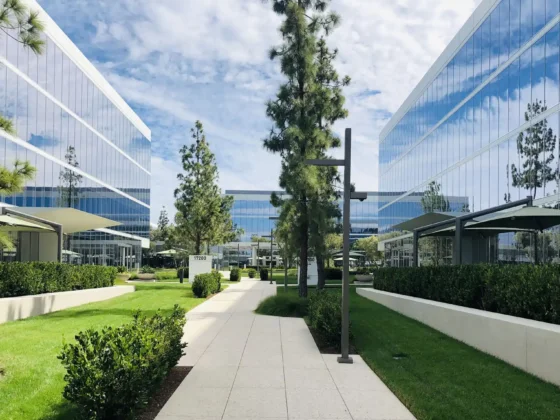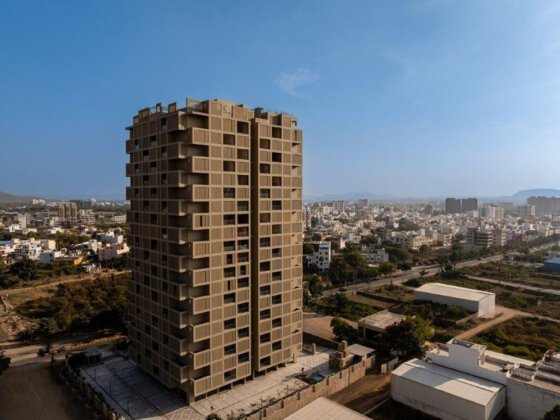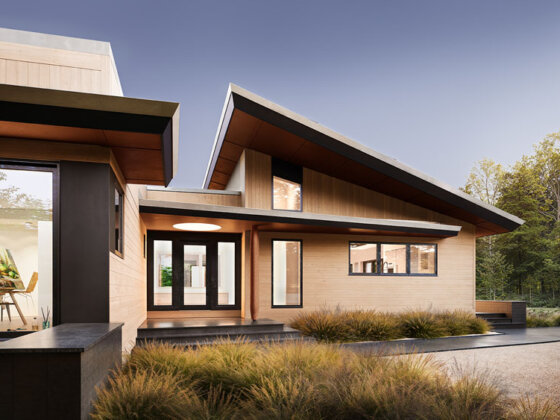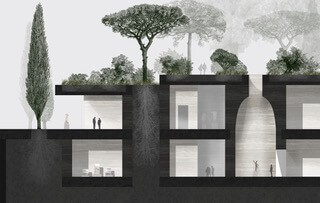Copenhagen, Denmark
Paper Island is a project by Cobe that aims to transform an abandoned complex of industrial buildings in Copenhagen into a vivid and contemporary center of urban life.
Paper Island was an industrial site dedicated to paper storage and was later abandoned and off-limits to the public located on the border between the former navy island of Holmen and Christianshavn, Copenhagen’s old industrial warehouse district.


Lately, this area received a second life when it became open to the public. Almost overnight, it became a new district with art exhibitions, fashion shows, concerts, flea markets, and street food halls.
However, the old buildings were in very poor condition, in terms of both maintenance and sustainability, and

Cobe’s reimagined the new Paper Island based on the unique character and spirit of the location and aims to transform it from an industrial city to a place for people.
“Our vision for the island’s future is to create a place that celebrates the city’s culture and the Copenhagen way of life. It was important for us that Paper Island also in the future will be a first-class example of Copenhagen’s generous urban living that can attract tourists and visitors at the same time has a strong local presence,” says Dan Stubbergaard, architect and founder of Cobe.

Cobe chose to use the industrial hall as a basis for the redevelopment of Paper Island, creating a vibrant culinary culture.
Small pocket spaces, lowered wooden platforms for boats, a wide harbor promenade and a public pool create a capacity for thousands of people to enjoy this blue urban living room.

By placing the new buildings on top of the halls as one big perimeter block, an intimate and protected courtyard space emerges that serves as both a private rooftop garden and a public green space on the ground floor.
The new residents of Paper Island get a beautiful new green urban space right next door. The island across the small canal will soon be transformed to a big park inspired by the romantic gardens of the 19th century.






Project: Paper Island
Architects: CoBe Architecture et Paysage
Design Team: Alexander Ejsing, Anders Gade Jørgensen, Antonia Szabo, Artur Gorski, Bart Smets, Ben Allnatt, Birk Folke Daugaard, Caroline Richardt Beck, Claes Nilsson, Clement Bue Maali, Cristina Marigo, Dan Stubbergaard, David Boss Jessen, Eik Bjerregaard, Greta Tiedje, Hjalte Thorn Bidsted, Iben Marie Borbye Pedersen, Kenn Andersen, Kristoffer Harling, Lars Harup, Louise Flach de Neergaard, Mads Birgens Kristensen, Majbritt Lerche, Marianne Filtenborg, Marie Harvard-Delcey, Mark Aron Thomsen, Matilda Andersson, Mette Heide, Nicolai Duedahl Hende, Nikolaj Harving, Peter Laust Røhr Hønnicke, Piotr Zalewski, Rasmus Lassen, Rune Madsen, Sigrid Marie Poulsen, Simon Sjökvist, Steffen Ommundsen, Sune Mogensen, Susanne Skov Kunert, Søren Schaumburg Jensen, Ted Schauman, Teresa Fernández Rojo, Thomas Bang Jespersen, Thomas Krarup, Ulrich Pohl, and William Gardner
Client: CPH City & Port Development, CØ P/S (Danica Ejendomsselskab, Unionkul Ejendomme, Nordkranen), and NCC
Collaborators: Inside Outside, Via Trafik, Transsolar, MOE
Photographer: Rasmus Hjortshøj – COAST
Historical photos: Københavns Museum
Photographs: Courtesy of the Architects













